Exercício
2
Com o exercício seguinte, você pode testar a sua compreensão relativamente à identificação de acontecimentos. Assim foram escolhidos 10 exemplos. Estão armazenados aqui em formato electrónico para descarregar. Nas Masterclasses Internacionais já devem estar descarregados no seu computador. Os ficheiros terão de ser abertos pelo programa MINERVA (com "Read Event Locally").
A sua tarefa é distinguir acontecimentos de sinal de acontecimentos de fundo. Acontecimentos de sinal são aqueles em que se produziu um e um só bosão W. Nos acontecimentos de sinal irá também determinar se o bosão W decaíu num electrão, ou num positrão, ou num muão, ou num anti-muão, e no anti-neutrino ou neutrino associado. Acontecimentos com jactos, bosões Z, e pares de quarks top são acontecimentos de fundo.
Você pode verificar os seus resultados usando a tabela de baixo. Para cada acontecimento, escolha o processo que acha que terá ocorrido. Clicando em "Confirm Task", irá obter o número de acontecimentos com os processos correctamente identificados. Clicando em "Correct Answers", poderá ver as respostas correctas.
Divirta-se no teste!
-
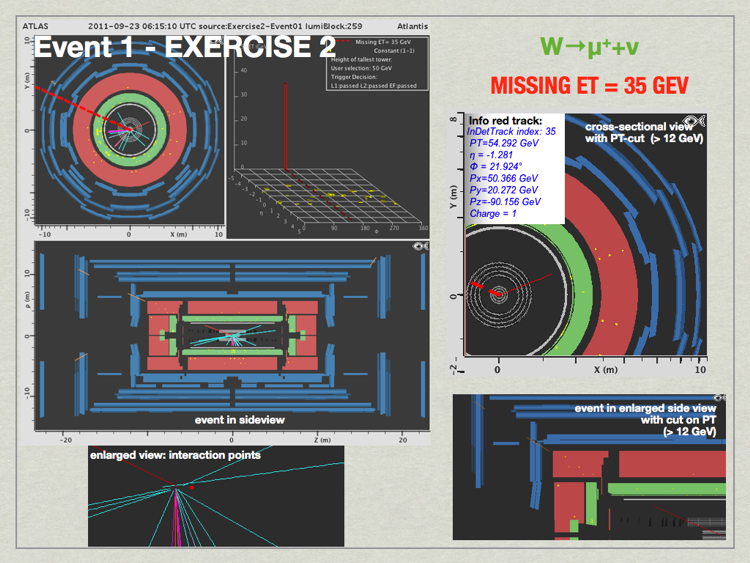 MINERVA can only display information on muons in cross-sectional view if the muon travels through the barrel region. In this example the muon leaves in forward direction and thus can only be identified with help of the side view. Tracking and calorimeter information is available in cross-sectional view though.
MINERVA can only display information on muons in cross-sectional view if the muon travels through the barrel region. In this example the muon leaves in forward direction and thus can only be identified with help of the side view. Tracking and calorimeter information is available in cross-sectional view though.
-
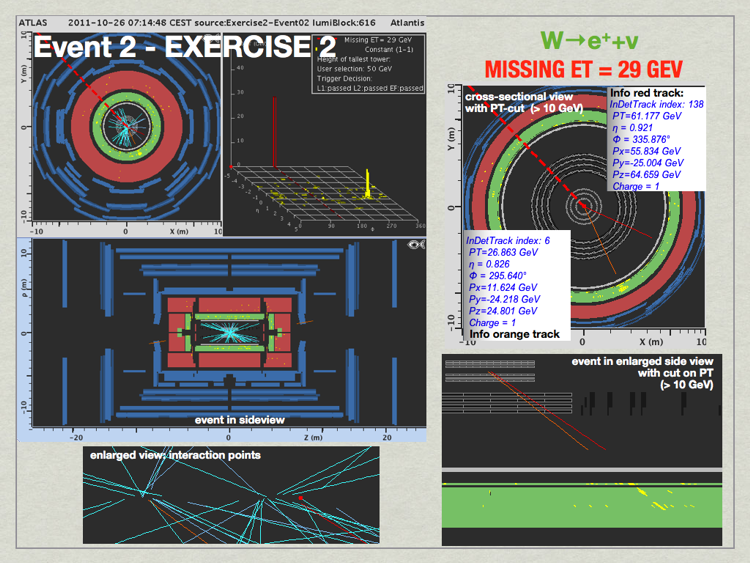 The red track cannot be identified as an electrically charged lepton, arisen from a different vertex (compared to the positron shown with orange track) and is thus not of interest.
The red track cannot be identified as an electrically charged lepton, arisen from a different vertex (compared to the positron shown with orange track) and is thus not of interest.
-
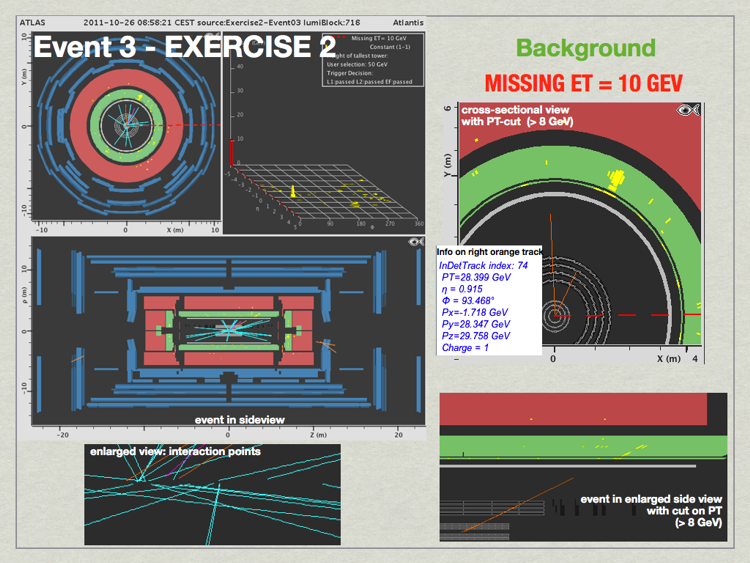 Missing transverse energy is too little.
Missing transverse energy is too little.
-
 Missing transverse energy is too little. Electron candidate (orange track) is not well isolated from electrically charged particles around.
Missing transverse energy is too little. Electron candidate (orange track) is not well isolated from electrically charged particles around.
-
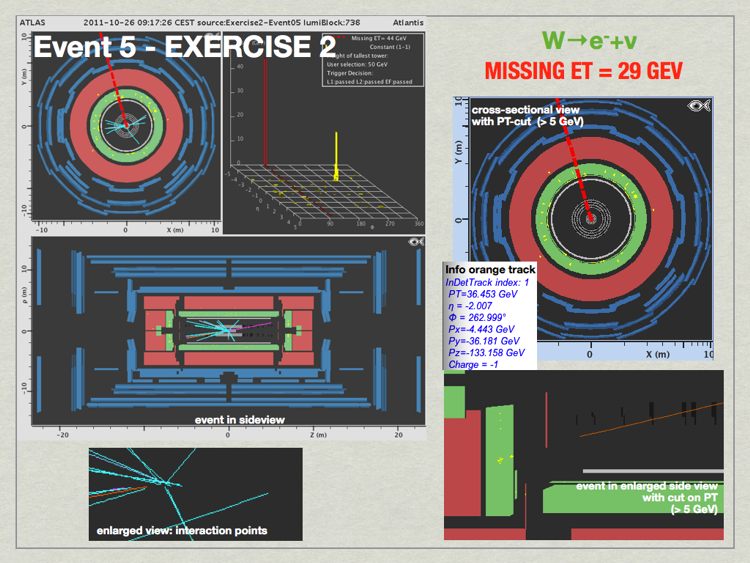 MET>25 GeV, there is exactly one electron (electric charge = -1) in the event, well isolated. It is not visible in cross-sectional view since it moves in forward direction but can be clearly identified in side view.
MET>25 GeV, there is exactly one electron (electric charge = -1) in the event, well isolated. It is not visible in cross-sectional view since it moves in forward direction but can be clearly identified in side view.
-
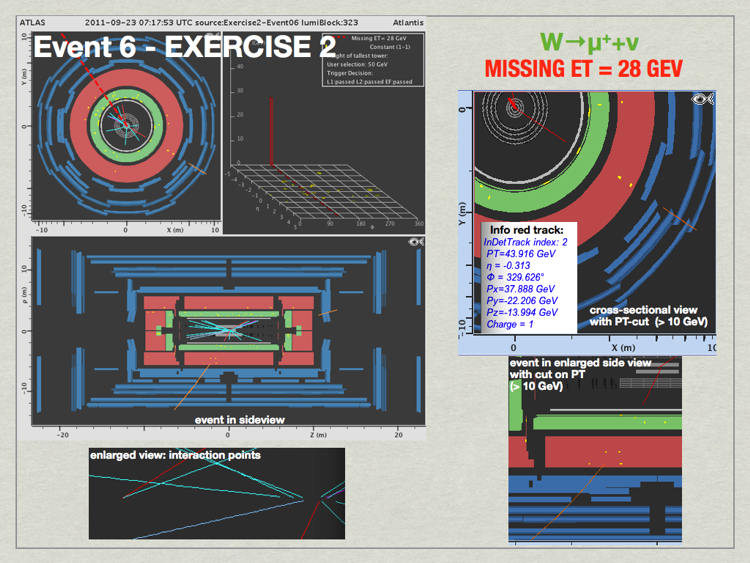 MET>25GeV, there is exactly one anti-muon (electric charge = 1) arising from the right vertex (see enlarged side view on bottom left), well isolated, with PT>20GeV.
MET>25GeV, there is exactly one anti-muon (electric charge = 1) arising from the right vertex (see enlarged side view on bottom left), well isolated, with PT>20GeV.
-
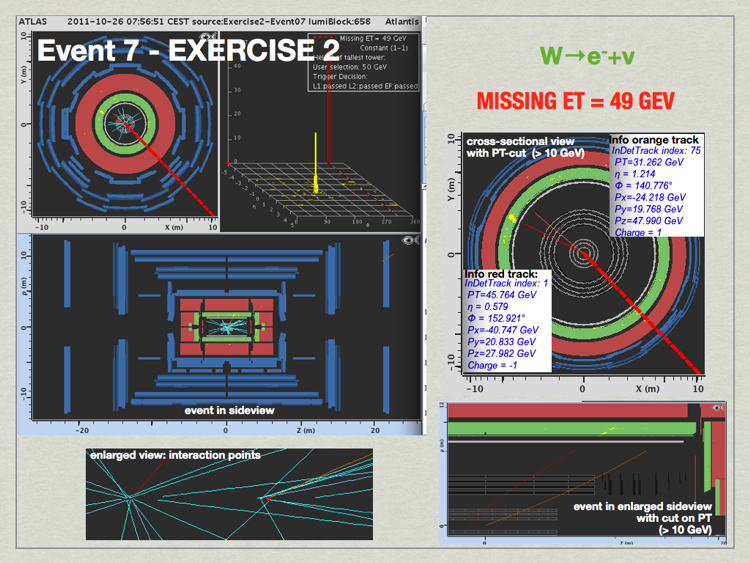 MET > 25 GeV. Two hight-PT, isolated tracks arising from two vertices. Only the red track (PT > 20 GeV) can be combined with calorimeter clusters and thus identified as electron (electric charge = -1).
MET > 25 GeV. Two hight-PT, isolated tracks arising from two vertices. Only the red track (PT > 20 GeV) can be combined with calorimeter clusters and thus identified as electron (electric charge = -1).
-
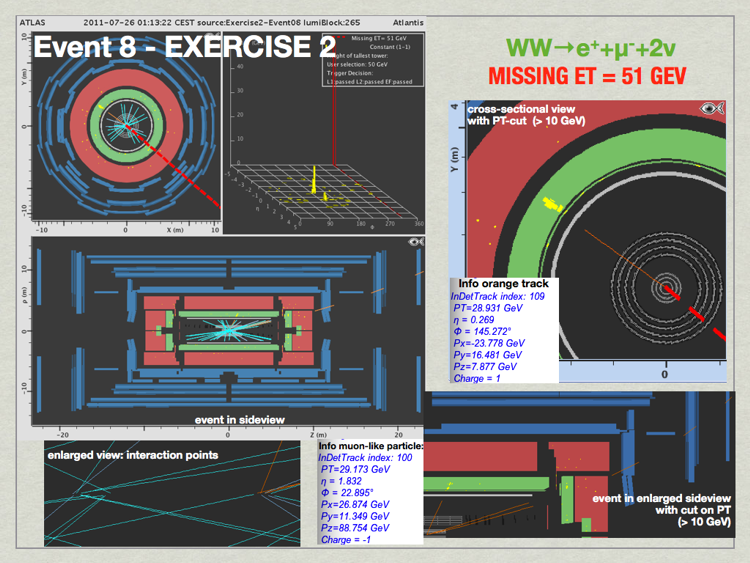 MET > 25 GeV, there are exactly two, oppositely electrically charged leptons in the event (a positron and a muon), both are well-isolated from Jets. The muon can only be identified in side view since it moves in forward direction. There is also another high-PT track in the event, which cannot be assigned to third electrically charged lepton.
MET > 25 GeV, there are exactly two, oppositely electrically charged leptons in the event (a positron and a muon), both are well-isolated from Jets. The muon can only be identified in side view since it moves in forward direction. There is also another high-PT track in the event, which cannot be assigned to third electrically charged lepton.
-
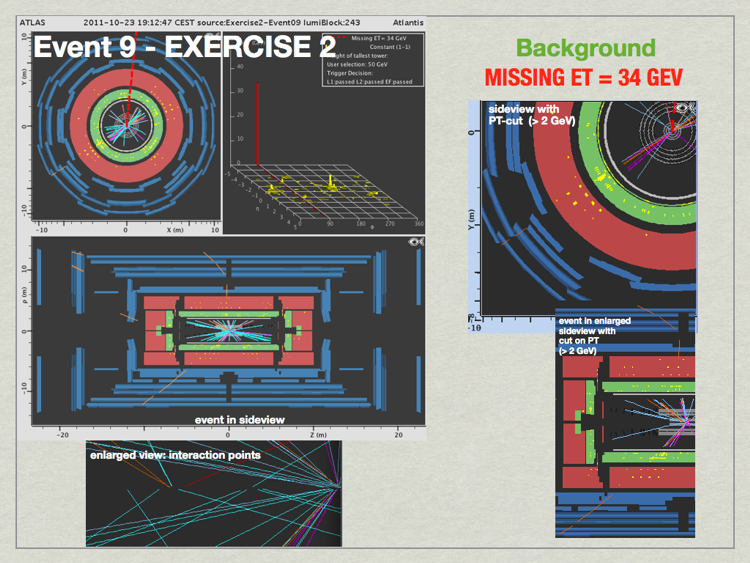 Possible muon candidates are not isolated from Jets.
Possible muon candidates are not isolated from Jets.
-
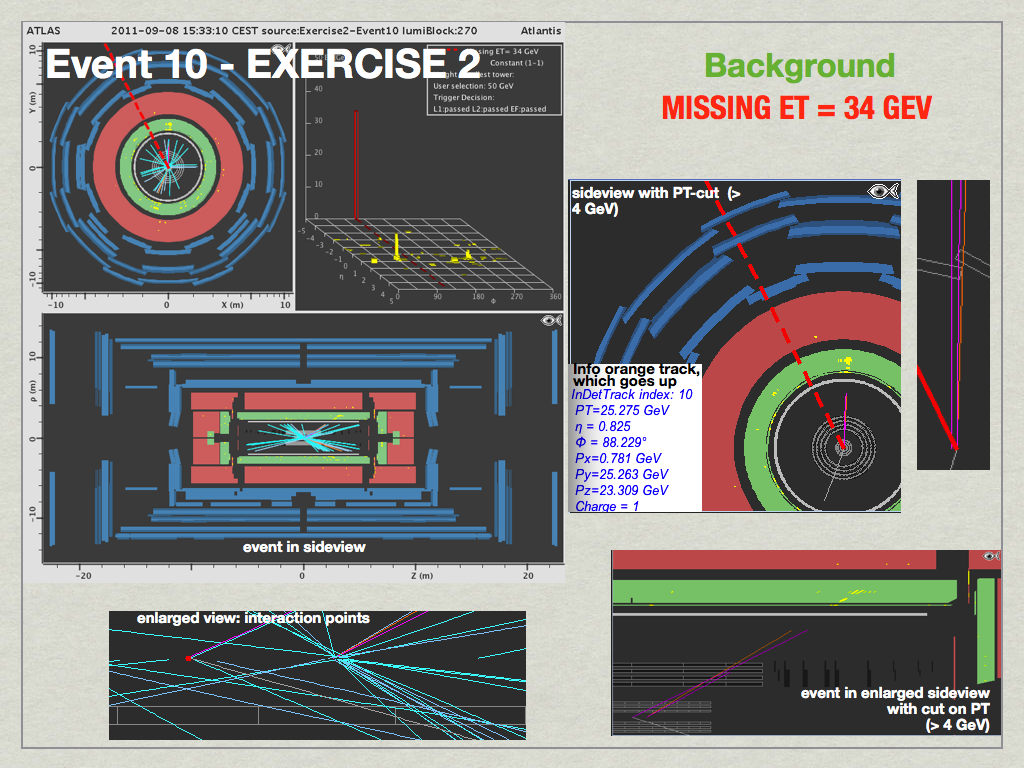 There are two orange tracks in the event. The one that can be combined with clusters in the calorimeter goes up in cross-sectional-view. It is overlaid by a purple track, whose accompanying particle was produced so close to our electron candidate, that we cannot really say it was isolated (look at the enlarged views).
There are two orange tracks in the event. The one that can be combined with clusters in the calorimeter goes up in cross-sectional-view. It is overlaid by a purple track, whose accompanying particle was produced so close to our electron candidate, that we cannot really say it was isolated (look at the enlarged views).










